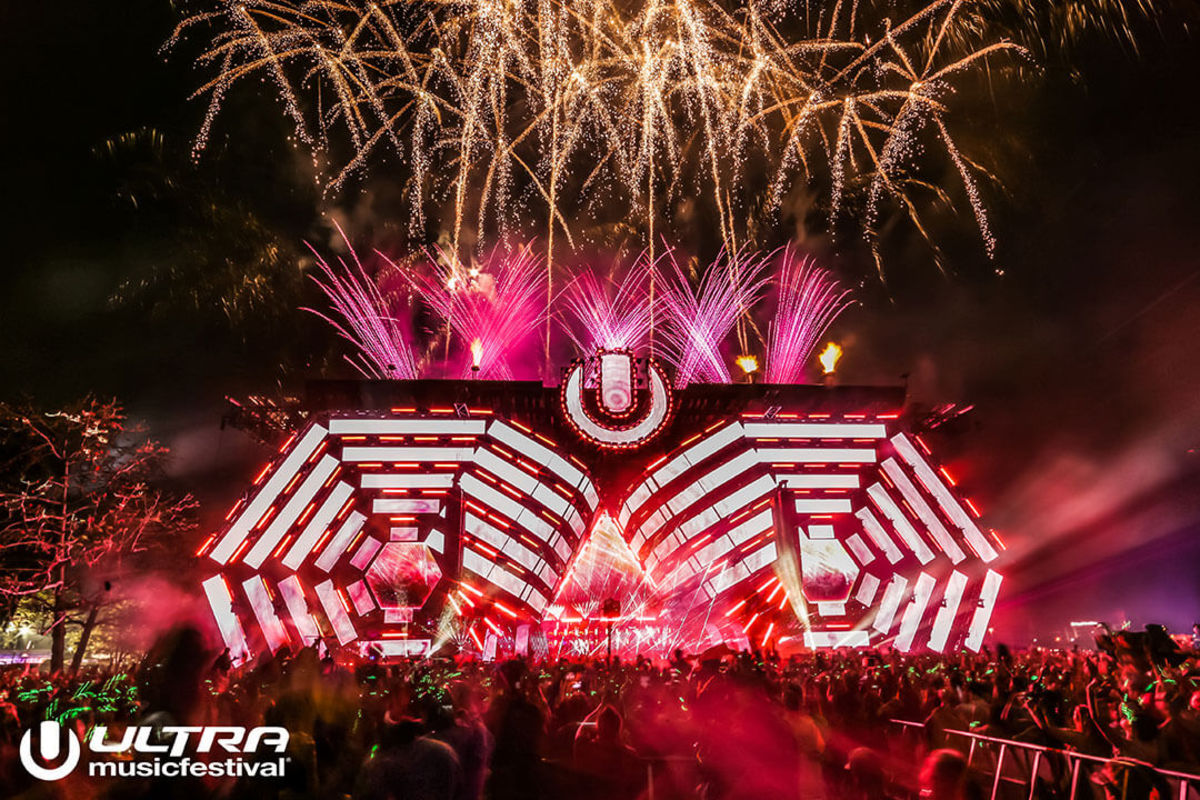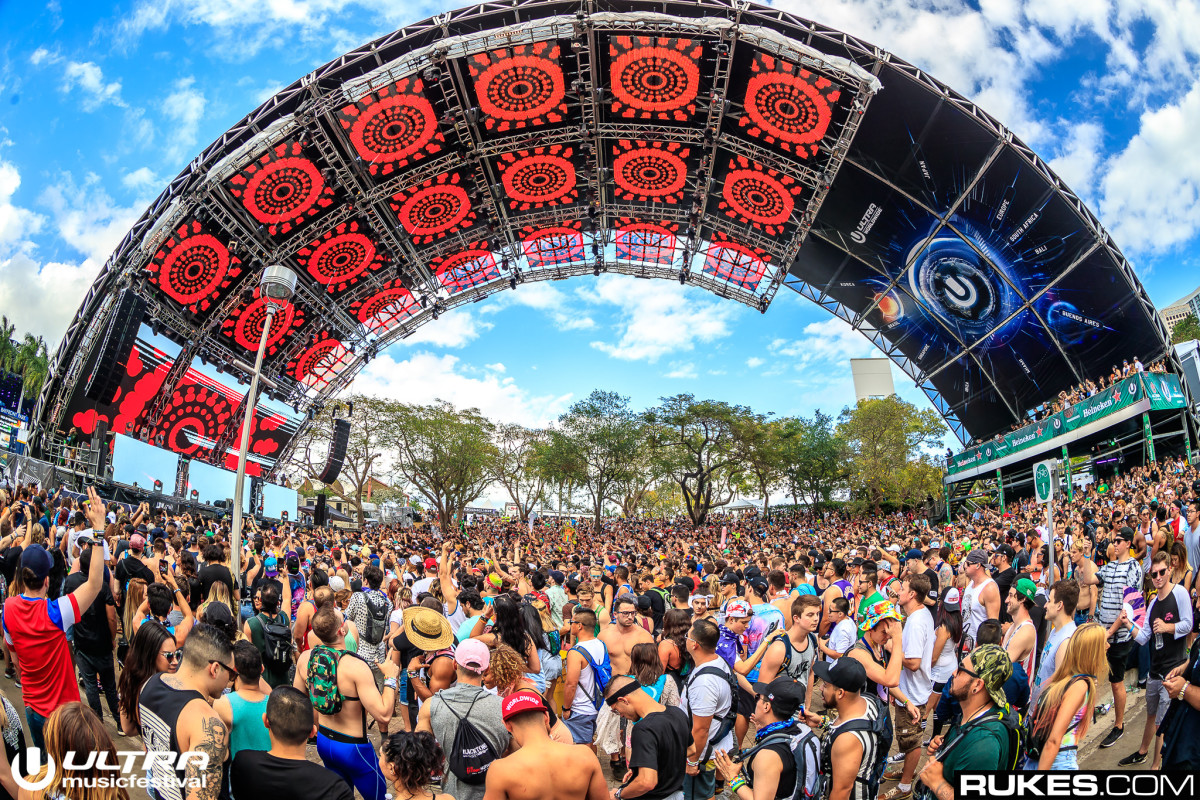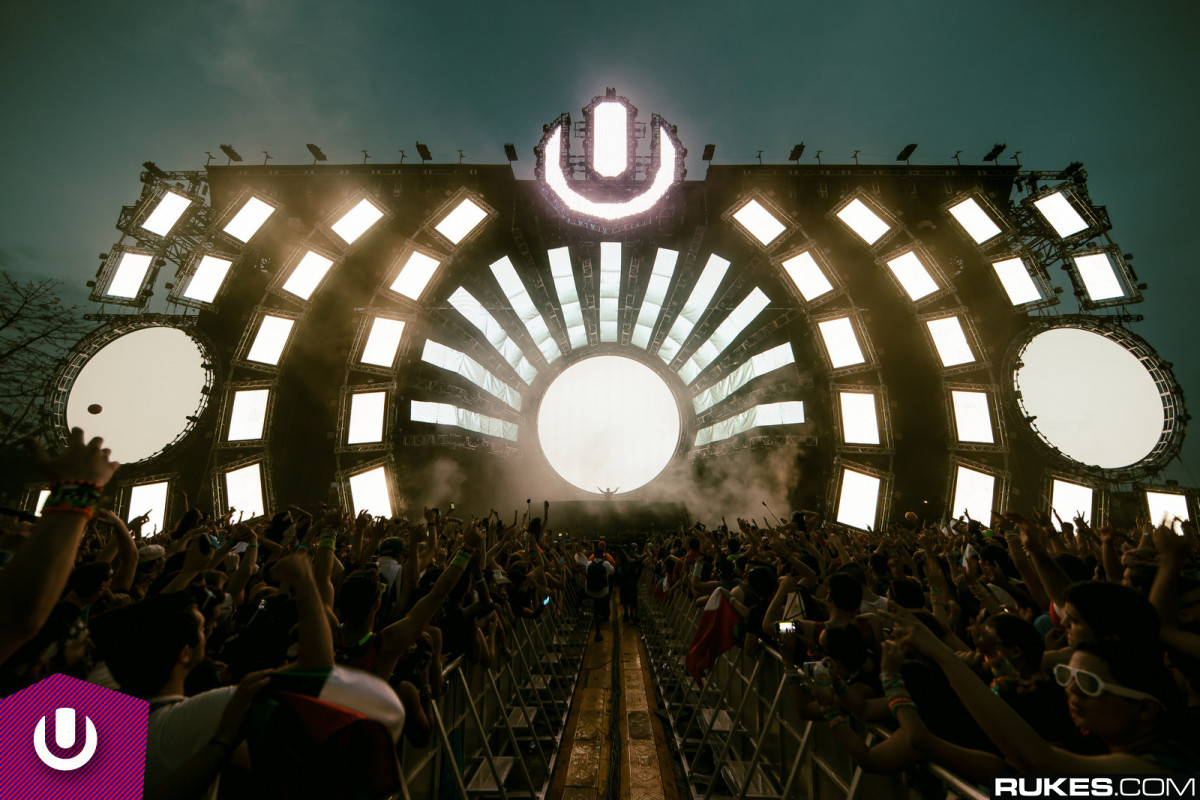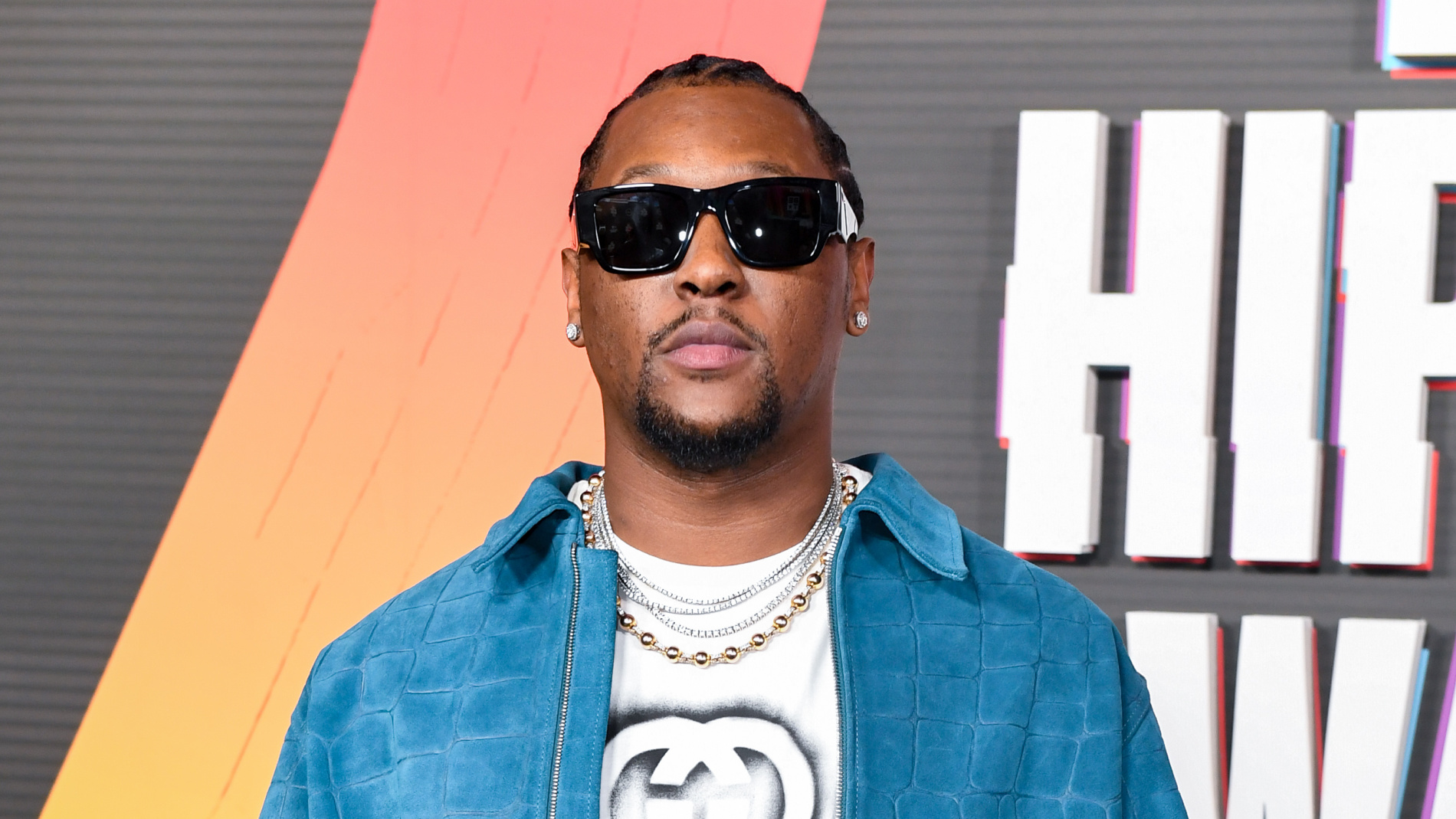From Miami to Seoul, Ultra Music Festival’s gargantuan stages have entranced the EDM community for decades. Unbeknown to most fans, one man leads the creative direction behind the global festival brand’s bold visual direction.
From stage production to branding, Richard Milstein is responsible for every element of Ultra’s design, both digital and physical. He plans, designs and manages all of the brand’s stages, logistics, activations and guidelines across its 26 continent-spanning locations.
Over a decade working with Ultra, Milstein has brought more than 250 stages to life, including multiple iterations of its crown jewels: the massive Miami mainstage and iconic, underground-focused RESISTANCE concept.
In the digital realm, Milstein shepherds the look and feel of Ultra’s marketing assets, like its website and lineup posters, ensuring the festival embodies and amplifies its distinct identity as one of the world’s leading electronic music festivals.

Ultra Worldwide
Growing up, Milstein knew he was destined for a life in music.
“It’s been in my blood since I was a young kid, and we’re talking mid-80s, late-80s,” he tells EDM.com. “That’s when I was really into electronic music already. I always went to the record stores, I always bought the latest and greatest electronic music: my first two CDs were Carl Cox and Danny Tenaglia.”
But design wasn’t always what Milstein set out to do. It was a happy accident, the byproduct of unfavorable results after pouring his energy into music production.
Milstein studied production and engineering at Berkeley College of Music before moving to Miami to pursue a career in music. During college, he’d spend his free time making music and moonlighting as a DJ at a local Boston nightclub. Things took a sour turn, however, once financial instability reared its ugly head.
“It’s really tough to make money to survive as a musician because it’s not like a nine-to-five job with a steady income,” he explains. “If songs don’t get traction, you’re just not going to see any movement. I needed to get some sort of ongoing job so I would have a steady income.”
Graphic design came into the fold because of a chance encounter with Photoshop.
“I remember that my friend had given me a CD back then with just a bunch of design programs,” Milstein recalls. “I just started playing around with that and had a thing for it. In such a short period of time, I was able to start doing some really cool, creative things with these programs. We’re talking about, like, Photoshop 3.0. So that was interesting. And that’s how I actually got into the design world.”
Upon discovering a knack for graphic design, Milstein knew he had to marry it with his love of electronic music.
“I started doing all this design work for myself at home, I created this amazing portfolio and that’s what I used to get into the nightclub industry,” he explains. “I went there first, the nightclub industry, because I’ve always had a passion for electronic music.”
Soon enough, Milstein was cutting his teeth as a graphic designer, making flyers, posters and ad campaigns for nightclubs in Miami. As part of freelancing, he’d often scour Craiglist in search of new accounts. One fortuitous day, he saw a post from Ultra Music Festival looking to hire an in-house graphic designer.
“I just applied, had the interview and that was it,” he casually recounted.
Far from the towering heights of Ultra’s Creative Director role, Milstein started at the bottom of the design chain at the festival as “just a regular entry-level graphic designer,” he said. He joined Ultra at a pivotal moment when the festival was overhauling its design staff.
“When I started, it was kind of strange because they were working with a design agency, and they didn’t want to continue with the agency,” he elaborated. “They wanted to work directly with an individual in-house.”

Rukes
Starting as Ultra’s sole in-house graphic designer, Milstein had his work cut out for him.
“As the festival grew globally, there was a huge amount of resources to fulfill when it came to design work,” he said. “Marketing was very hungry for a lot of content, and obviously, over the years, we’ve shifted from printing more into digital stuff. I designed flyers, ads, posters, campaigns, websites—you name it. At some point I even designed fonts.”
However, graphic design alone didn’t quench Milstein’s thirst for creativity.
“I’ve always had this thing for production design,” he gushed. “I’ve always been so fascinated because of my work as a musician and desire to perform in front of a huge crowd. When it came to the Ultra shows, I would always be at the front of house because I thought that was my place, that was the best seat. When I’d see the guys managing and controlling the whole stage, I was in awe all the time. It was just super impressive and I wanted to get a piece of it.”
When opportunity struck, Milstein swooped in to try his hand at stage production. He says his first production gig was in 2008, a time when he remembers working with the Black Eyed Peas and music industry veteran Steve Lieberman. Harkening back to an era before the EDM boom of the 2010s, his work didn’t involve big-budget lighting. Instead, he crafted sprawling artwork to fill out the stage.
Milstein’s passion for architecture and background as a 3D rendering artist spurred him in his quest to master stage production. Honing a decade of experience doing 3D art alongside Miami-based architect Francois Frossard, he felt confident applying his design chops to stages.
“If you look at a stage, it’s considered some sort of architectural piece because you’re building something, even though it’s temporary,” he noted.
However, Milstein’s lack of formal training hindered him when it came to the mechanics and engineering of stages. To fill in the gaps, he relied on the production team he worked closely with at Ultra, soaking knowledge like a sponge.

Richard Milstein
Balancing stage production and graphic design, Milstein quickly climbed up the ranks at Ultra. As the workload grew, he was tasked with fleshing the creative department out from the ground up, earning himself the role of Creative Director within three years.
Despite building hundreds of stages at Ultra over the years, Milstein’s favorite design remains the first one he ever did in 2014: the Vortex.
“That was the point when I came in and they gave me the driver’s seat,” he explained. “They said, ‘Hey, now you need to do something amazing for main stage. This is your first shot. Your first and your only shot at it.’”
Looking at the mind-bending construct that came to be, it’s safe to say Milstein delivered.

Rukes
Some day, Milstein hopes to revisit the Vortex, reimagining it with modern technology. Still, his biggest highlight of working with Ultra isn’t a specific stage. Rather, it’s the joy of working alongside his team and seeing the fruits of their labor come to life.
“There’s just a whole lot of things behind the scenes, particularly because of the back and forth with the engineering, just to get a stage to look the way it does. So to see that finally finished and you think about all the stuff you had to go through, that’s a really nice highlight,” he gushes. “My production director and I always get very emotional at the end. Even if we’re there for five minutes and we see each other in the midst of everything and he’s super busy, we kind of break down for a second there.”
Onsite at Ultra, you can find Milstein bouncing around from stage to stage. After a pulse check around the festival, he indulges in techno and house music at its RESISTANCE stage. What started as a simple concept to highlight underground dance music at Ultra has blossomed into a distinct brand with residencies in Miami and Ibiza as well as standalone events in over 35 cities across the globe.
“My heart is there with the underground music,” Milstein added. “I know a lot of the artists there as well. They love to hang out.”
The communal mentality doesn’t extend to the mainstage, however. “The artists come in, they want to be flashy, take their pictures, do their moment, play and then they run off,” he quipped of the standard mainstage act.
Notwithstanding the glitz, the mainstage is where Milstein recounts witnessing Ultra’s most memorable acts, mentioning Swedish House Mafia, Martin Garrix, Hardwell and Tiësto as Ultra’s top performances over the years. ”Every time these guys come on, they always give me compliments on how amazing the production is,” he said. “But I also like to hear the negative comments because it just helps me make things better.”
Milstein openly fields negative comments on social media, often engaging in conversations in hopes of understanding and addressing frustrations stemming from the community. While he accepts he can’t please everyone, he’s usually able to sway negative opinions by sharing behind-the-scenes perspectives that people tend to overlook.
For example, certain aspects of stage design are simply out of Milstein’s control. Budgets and availability of equipment vary among different regions. Not to mention, the shuttering of manufacturing companies and supply chain woes caused by the COVID-19 pandemic continue to impact the inventory of key equipment, like lighting fixtures.
And even with Ultra’s leviathan budget, some things just aren’t feasible.
“It used to cost me $5,000 to send something from East Coast to West Coast,” Milstein said “Now it’s like $15,000. So if you have a bunch of vehicles having to do that cross country, things go way out of budget already.”

Alive Coverage
Above all, the toughest challenge for Milstein is realizing his vision in tandem with contracted teams in foreign countries, many of whom fall short when it comes to his comprehensive guidelines for production, sponsoring and branding.
“After a few years of working with the local production teams in different areas around the world, they start getting it,” he said. “What’s difficult is sometimes they reset their team or they change out their team completely, and then you kind of have to start over again.”
International shows can come with geopolitical problems too. Ultra’s annual festival in South Korea is one of its most popular events, but one year brought many stumbling blocks due to diplomatic affairs.
“There was tension going on there with North Korea and we needed to be ready to do a drill and go shelter in bunkers underneath the stadium [where Ultra South Korea was hosted],” Milstein recalled. “You would also see helicopters flying around. That was a little scary because you’re in foreign territory, you don’t really know what’s going on.”
Setting aside challenges in organizing international shows, Milstein believes many factors of stage design have become more manageable over time. Competitive pricing, innovation of equipment and acceleration in tangential fields like video and weather technology have improved the production process, empowering him and his team to push the envelope and build seminal stages.
Outside of creative direction for Ultra, Milstein spends his time leading Rednoir, a furniture rental and interior design company he founded with his wife—who is also a designer—10 years ago. Keeping Rednoir small and nimble, Milstein carved out a competitive edge over larger design companies in Miami.
“Since we’re boutique, we’re very easily able to adapt, do home staging, and provide a different sort of furniture, more particular and more of a high-end look,” he explained. “Because we’re interior designers as well, if you’re doing an event, we’re just not renting you furniture, but we’ll design it for you too. So you’re getting the whole package.”
Naturally, Milstein found a way to bring Rednoir to Ultra. His studio provides furniture for all the VIP and private artist areas at Ultra Miami.
Through word of mouth and a strong professional network, Milstein expanded Rednoir beyond Ultra too. Nike, Sony Recording Studios, Formula One and the Playground Camp at Burning Man are just a few of Rednoir’s many illustrious clients. The company’s portfolio also features Coachella’s famed Heineken House, which won the 2019 IFAI International Achievement Award for Excellence in Tent Manufacturing and Design.

Richard Milstein
Music is the tether between all of Milstein’s pursuits. And after almost 20 years in the industry, his passion for electronic music remains as strong as ever.
“I have great respect for the artists and I will make the most bespoke stage designs ever for them. That’s it,” Milstein said. “Those guys deserve next-level stuff. They’re in the eye of the world, they have the largest audience, and they need to be on a platform that actually serves them for their success.”







